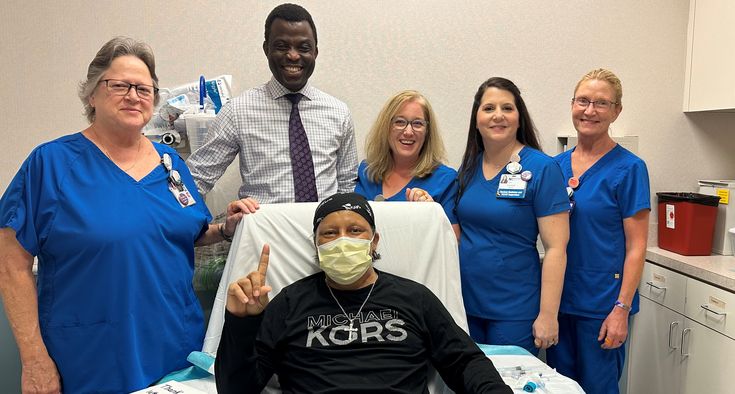As men get older and their prostates enlarge, that growth can cause problems. And so can traditional treatments.
It is not clear what causes an enlarged prostate, known as benign prostatic hyperplasia (BPH). But the condition is common in older men and affects as many as 33% of men 65 and older according to the National Institute of Diabetes and Digestive and Kidney Diseases. Other sources put that rate even higher.
And it's one more reason for men to make sure they schedule an annual checkup so they can keep their doctor abreast of any issue and be as proactive as possible in pursuing possible treatments.
Men start to notice when the prostate gland swells large enough to disrupt the bladder from emptying. While there is no prevention or cure for BPH, Novant Health Coastal Carolina Hospital patients can now opt for a minimally invasive treatment known as Aquablation therapy. The hospital is located just west of Hilton Head Island and north of Savannah.
“We have been eagerly awaiting this technology,” said urologist Dr. Eric Gwynn, part of the surgical team that in September treated Novant Health’s first Aquablation patient at Coastal Carolina Hospital. “With this new therapy there are huge benefits, including much less risk of incontinence or issues with erections or ejaculation.”
Questions about enlarged prostate? Get answers here.
With the help of AI robotics, surgeons use a water jet to remove excess prostate tissue and reduce the size of the gland. The approach enables precise monitoring of the entire prostate throughout the procedure thanks to live ultrasound imaging.
The biggest advantage: Aquablation treats prostates of any size, making any man a candidate for the surgery. It also poses fewer complications than transurethral resection of the prostate (TURP), which uses electric current and heat to cut out tissue.
There are anesthetic, erectile and ejaculation dysfunction risks with TURP. However, BPH is often treated surgically to avoid further urethral blockage and urinary tract infections.
Gwynn discusses the advantages of Aquablation therapy, which is covered by private insurance and Medicare.
What are the signs of an enlarged prostate?
Usually, beginning in your 50s, your body gives you the signals: Getting up excessively at night to use the bathroom and a stop-and-start urinary stream are common symptoms of BPH.
Before now, how were urologists treating an enlarged prostate?
The gold standard is TURP, which uses cautery—an electric current—to cut the excess tissue and core out the interior of the prostate to improve urinary flow. But that current has potential to damage the nerves responsible for erections, which is why some men could experience erectile dysfunction after the TURP procedure. With Aquablation therapy, there is no electric current; we’re using only water to remove tissue. So there’s no damage to those nerves.
Still, this is like inserting a power-washer into the urethra to blast away prostate tissue. How is the approach minimally invasive?
There is no cutting, so compared to having a surgical incision, Aquablation therapy is minimally invasive. There is not a lot of pain. We put a scope into the urethra to perform water jet ablation, and because we’re not using cautery, patients tend to heal faster. This way there are no erectile issues, and no damage to the urinary sphincter which controls leakage.
How would you compare the two approaches when it comes to accuracy?
Aquablation therapy is much more precise because we perform computer mapping of the resection zone prior to treatment. In addition, we’re using ultrasound to take multidimensional pictures of the prostate in real time. So it’s very precise as compared to TURP, where we resected (surgically removed) the tissue as we went along.
Which men are candidates for this?
In the past, we’ve had prostate size-limits for some of our procedures. With TURP, if the prostate is very large we’re looking for alternative therapies. But every man is a candidate for Aquablation therapy, because it can treat any-sized prostate.
Aquablation can take less than one hour versus one to two hours for TURP, and recovery is brief. General anesthesia is used, as well as a catheter during a required overnight stay at the hospital. Within a few days most patients are back to their lives without a catheter, though they can expect mild burning for a couple of weeks.










